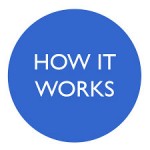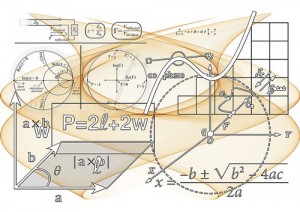ESSA: A Starter Kit for Private School Educators
Title II, Part A
Introduction| What is ESEA? | ESSA & Private Schools | Consultation | The Titles
Title II, Part A: Professional Development
This is the ESSA program that will be utilized by more private schools than any other. The basic  purpose of Title IIA is to “improve the quality and effectiveness of teachers, principals, and other school.” (ESSA §2001(2)) It does this by providing supplemental funding intended to underwrite, or offset the cost of providing various professional development opportunities to educators. Private school teachers, principals/heads of school, and other educational leaders can utilize Title IIA funding to attend various conferences, workshops and seminars, pursue certain graduate degrees, obtain a “clear” teaching credential, and more.
purpose of Title IIA is to “improve the quality and effectiveness of teachers, principals, and other school.” (ESSA §2001(2)) It does this by providing supplemental funding intended to underwrite, or offset the cost of providing various professional development opportunities to educators. Private school teachers, principals/heads of school, and other educational leaders can utilize Title IIA funding to attend various conferences, workshops and seminars, pursue certain graduate degrees, obtain a “clear” teaching credential, and more.
How does Title II, Part A funding work?
 It’s simpler than Title I, Part A! Funding flows from the U.S. Department of Education to state departments of education (which are permitted to reserve several percent of the funds to provide state-level professional development activities), and from there to local public school districts (LEAs).
It’s simpler than Title I, Part A! Funding flows from the U.S. Department of Education to state departments of education (which are permitted to reserve several percent of the funds to provide state-level professional development activities), and from there to local public school districts (LEAs).
The amount of funding to be reserved to provide professional development opportunities for private school educators is equal to the total number of students enrolled in nonprofit private schools as a percentage of all students enrolled in a district’s public and private schools.
Example: Assume that in the Friendly Public School District 90,000 students are enrolled in public schools, and 10,000 students are enrolled in nonprofit private schools. Further assume that the district’s total ESSA Title II, Part A allocation is $4 million. Because the district’s private school enrollment equals 10 percent of the total public-plus-private school enrollment, $400,000 would be set aside to provide professional development activities for the district’s private school educators. A particular private school with a total enrollment of 300 students would be entitled to receive 300 X $40 = $12,000 worth of professional development services for its educators.
 Keep in mind: ESSA introduces an important change to the way the Title IIA “set-aside” for private school educators is calculated. Under provisions of the prior law (NCLB), the proportionate share of funds was calculated on the basis of only that portion of a district’s total Title IIA allocation that was earmarked for professional development. For example, if the Friendly Public School District had decided to use $1 million of its $4 million Title IIA allocation for class-size reduction, the proportionate share of private school funding would be calculated using the remaining $3 million. Beginning in school year 2017-18, the district must base the proportionate share on its total Title IIA allocation (i.e., $4 million), thus increasing the private school per-pupil set-aside amount by 25 percent in our hypothetical example.
Keep in mind: ESSA introduces an important change to the way the Title IIA “set-aside” for private school educators is calculated. Under provisions of the prior law (NCLB), the proportionate share of funds was calculated on the basis of only that portion of a district’s total Title IIA allocation that was earmarked for professional development. For example, if the Friendly Public School District had decided to use $1 million of its $4 million Title IIA allocation for class-size reduction, the proportionate share of private school funding would be calculated using the remaining $3 million. Beginning in school year 2017-18, the district must base the proportionate share on its total Title IIA allocation (i.e., $4 million), thus increasing the private school per-pupil set-aside amount by 25 percent in our hypothetical example.
How can Title II, Part A funding be used?
The ESSA statute lists a variety of allowable uses of Title IIA funds, not all of which are applicable to private school educators. Two sections of the law that do permit broad application to private school teachers, administrators and other educational leaders are excerpted below:
- “…providing high-quality, personalized professional development that is evidence-based, to the extent the State (in consultation with local educational agencies in the State) determines that such evidence is reasonably available, for teachers, instructional leadership teams, principals, or other school leaders, that is focused on improving teaching and student learning and achievement…” (ESSA §2103(b)(3)(E))
- “…developing and providing professional development and other comprehensive systems of support for teachers, principals, or other school leaders to promote high-quality instruction and instructional leadership in science, technology, engineering, and mathematics subjects, including computer science…” (ESSA §2103(b)(3)(M))
There are many other allowable uses of Title IIA funds, including:
- “developing programs and activities that increase the ability of teachers to effectively teach children with disabilities…” (ESSA §2103(b)(3)(F))
- “providing training to support the identification of students who are gifted and talented, including high ability students who have not been formally identified for gifted education services, and implementing instructional practices that support the education of such students…” (ESSA §2103(b)(3)(J))
- “supporting the instructional services provided by effective school library programs…” (ESSA §2103(b)(3)(K))
- “providing training for all school personnel, including teachers, principals, other school leaders, specialized instructional support personnel, and paraprofessionals, regarding how to prevent and recognize child sexual abuse…” (ESSA §2103(b)(3)(L))
- “supporting efforts to train teachers, principals, or other school leaders to…effectively engage parents, families, and community partners, and coordinate services between school and community…” (ESSA §2103(b)(3)(E)(iii))
And there’s considerably more.
Consultation with public school district representatives should begin well in advance of a school year. Private school officials will want to know how much money is available for Title II, Part A services at the earliest possible date. At the same time, private school leaders should enter the consultative process with a fairly good sense of the programs they’d like to see funded. While it can be difficult to do the latter without knowing the former, it helps to have priorities in mind. Staying mindful of the supplement not supplant requirement, priority should be assigned to the most beneficial opportunities a school would not otherwise provide.
Starting the process at an early date will also prove helpful to your public school district colleagues. If you would like to send some of your teachers to a professional conference, the sponsoring organization and program may need to be researched and approved months in advance. The amount of funding to be provided must be determined, and a mechanism for conveying payment established. If you’d like to secure the services of a presenter who will conduct a professional development program on your campus, the individual may need to complete various forms in order to become an approved vendor. While such arrangements are part and parcel of a the district’s administrative obligations, it’s good practice and common courtesy to avoid last-minute requests.
Remember: A public school district cannot fulfill its Title II, Part A obligation to private school educators by simply extending an offer to participate in the same professional development programs it makes available to public school teachers and other personnel.
State Activities
The law permits state departments of education to retain a small percentage of the Title II, Part A funds it receives, before passing the rema inder on to public school districts. The portion kept by the state may be used to provide on a statewide level, services that are similar to those provided by school districts at a local level. Just as a proportionate amount of a district’s Title IIA funding must be used to provide comparable professional development services to private school educators, so, too, must the state department of education.
inder on to public school districts. The portion kept by the state may be used to provide on a statewide level, services that are similar to those provided by school districts at a local level. Just as a proportionate amount of a district’s Title IIA funding must be used to provide comparable professional development services to private school educators, so, too, must the state department of education.
The California Department of Education fulfills this obligation with advisement and oversight from a Private School Advisory Committee appointed by the State Superintendent of Public Instruction. The Committee, together with public sector experts, conducts periodic needs assessments and uses the information to plan a variety of high-quality-at-low-cost professional development programs attuned to the needs of the state’s private school educators. You can find information about currently offered programs at the California Private Schools Professional Development website.



